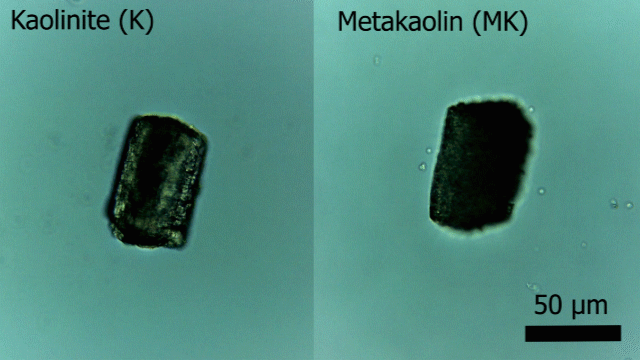A new publication titled “Evolution of kaolinite morphology upon exfoliation and dissolution: Evidence for nanoscale layer thinning in metakaolin” was published in Applied Clay Science in March 2022.

When kaolinite is calcined, it transforms into metakaolin, which can dissolve and react under alkaline conditions, making it a potential low-CO2 alternative to Portland cement. The reactivity of kaolinite has been studied in terms of dissolution kinetics, but not much is known about the evolution of clay morphology upon dissolution. Here, we apply quantitative imaging approaches to quantify the extent of morphological changes that occur in dissolving kaolinite and metakaolin at multiple scales. At the micro-scale, we successfully capture in situ exfoliation of clay particles while dissolving in NaOH. We find a noticeable difference in the pattern in which these clays break apart. Raw kaolinite would expand along its length, while layers in metakaolin were not as well defined as in kaolinite. At the nano-scale, when comparing the layer thickness of metakaolin and dissolved metakaolin, an evident thinning of ~20 nm (from 95 nm to 75 nm) is found. These results explain how the dissolution process takes place on these layered structures: by breaking the bonds in-between layers and then dissolving these individual layers leading to a reduction in thickness. These new results pave the way towards a morphological understanding of calcined clay dissolution.

This is the first article from our group’s M.S. candidate Pablo Romero. Congratulations Pablo!
The article can be accessed here.
